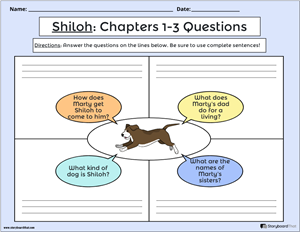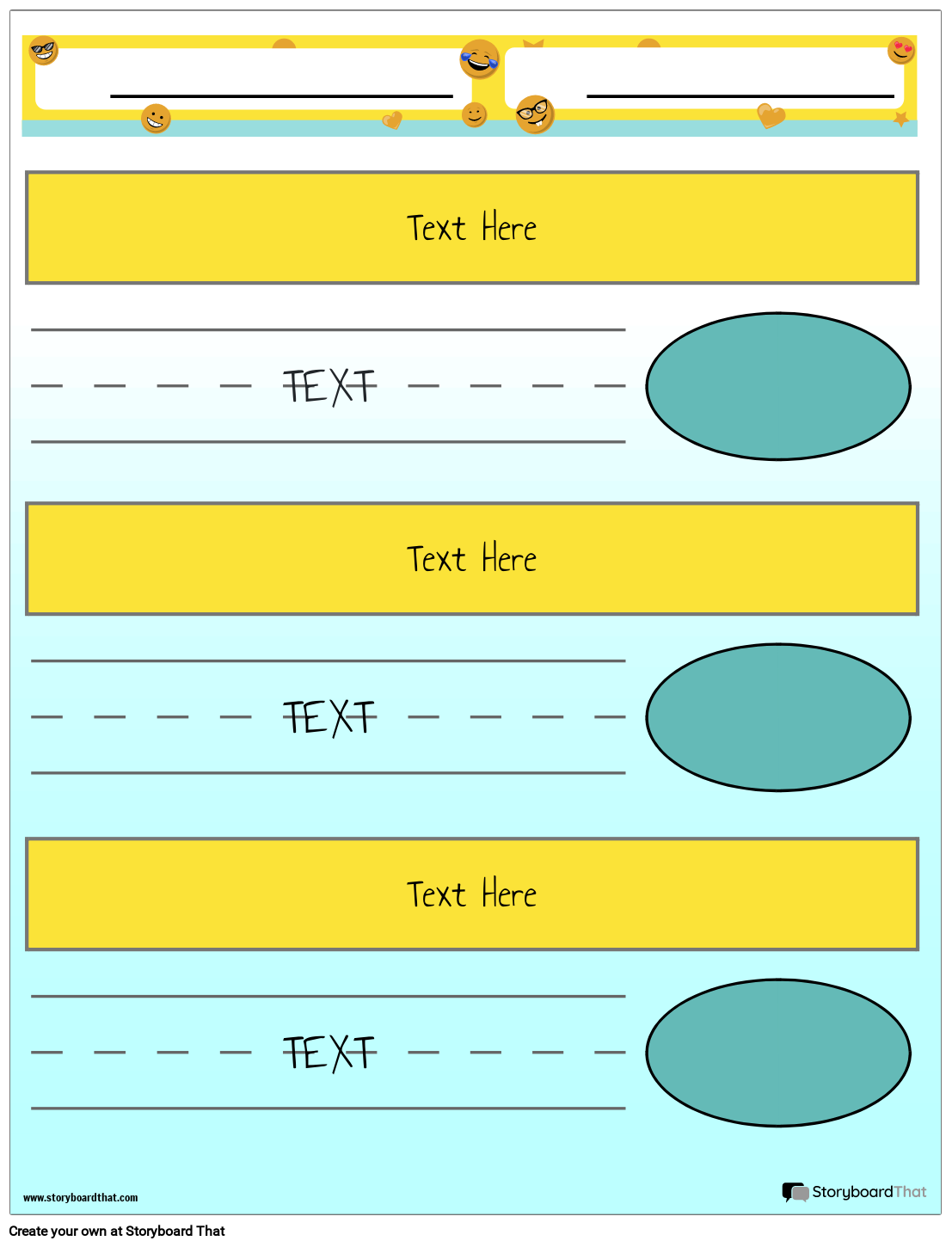Customize a Comprehension Questions Template
If you're assigning this to your students, copy the worksheet to your account and save. When creating an assignment, just select it as a template!

Exploring Comprehension Question Worksheets
Reading comprehension is a crucial skill that plays a fundamental role in academic success and lifelong learning. To develop and strengthen this skill, educators often turn to comprehension question worksheets, which are invaluable tools for engaging students, assessing understanding, and fostering critical thinking. Teachers can utilize online comprehension questions maker tools to simplify the process of creating comprehensive worksheets. These user-friendly tools provide a convenient platform for generating a variety of well-crafted comprehension questions that align with specific learning objectives and provide helpful resources and examples to improve reading comprehension in learners of all grade levels.
What are Comprehension Questions Worksheets?
These worksheets are printable activities that prompt readers to answer questions based on reading passages. Their purpose is to assess comprehension, encourage active reading, and promote critical thinking.
Tips for Using Reading Comprehension Worksheets Effectively
- Select Appropriate Reading Comprehension Passages: Teachers should carefully choose passages that align with students' grade level and cater to their interests and abilities. This ensures that kids can effectively engage with the content and apply their existing knowledge and vocabulary.
- Customize Worksheets to Target Specific Skills: Teachers can tailor reading worksheets to focus on specific comprehension skills, such as identifying main ideas, making inferences, or analyzing literary devices. This allows readers to develop and strengthen their reading skills in a targeted manner.
- Provide Clear Instructions: Clearly communicate the purpose and expectations of the worksheets. Clear instructions ensure that everyone understands the task at hand and can approach it with confidence.
- Incorporate Varied Comprehension Exercises: To keep the all in the classroom engaged, teachers can include a variety of comprehension exercises within the worksheets. These exercises can range from multiple-choice questions to open-ended prompts, allowing students to practice different reading strategies and demonstrate their understanding in various ways.
- Utilize Graphic Organizers: Graphic organizers are valuable tools for visualizing information and organizing thoughts. Teachers can incorporate graphic organizers into the worksheets to help structure ideas, make connections, and extract key information from the reading passages.
- Scaffold Learning: This may involve modeling the process of answering questions, providing examples, or offering assistance when needed. Gradually, kids can develop independence and confidence in their reading comprehension skills.
- Encourage Reflection and Discussion: After completing the worksheets, teachers can facilitate discussions or reflection activities to deepen understanding. This allows the class to share their insights, ask questions, and engage in meaningful conversations about the reading passages.
By implementing these tips, teachers can maximize the effectiveness of reading comprehension worksheets, fostering students' knowledge, vocabulary, and skills while promoting active engagement with the reading materials. The combination of grade-level-appropriate passages, well-designed comprehension exercises, and the use of graphic organizers creates a supportive learning environment that nurtures students' reading comprehension abilities.
Utilizing Comprehension Questions Worksheets
Comprehension question worksheets serve as valuable tools in developing and enhancing reading comprehension skills. These worksheets accompany reading comprehension passages or texts and provide a range of questions that test students' understanding of the material. They help children engage with the text, identify main ideas, analyze supporting details, infer meaning, and apply critical thinking strategies.
Reading comprehension skills are essential to effectively grasp and analyze various texts across subjects. These skills enable readers to extract meaning, make connections, and think critically about what they read. By enhancing understanding, learners can broaden their knowledge, develop critical thinking abilities, and become independent learners.
Reading comprehension worksheets encompass different question types, including literal comprehension, inferential comprehension, vocabulary comprehension, and critical thinking. Each type serves a specific purpose in evaluating students' understanding and analytical skills.
Planning a Reading Comprehension Worksheet
- Select a Reading Comprehension Passage: Choose a suitable passage or text that aligns with the grade level and learning objectives. Consider using fiction or nonfiction texts, articles, stories, or excerpts from books.
- Determine the Learning Objectives: Clearly define the specific skills or concepts you want to assess through the worksheet. Identify the areas of comprehension you want students to demonstrate, such as main idea identification, inference-making, vocabulary understanding, or critical thinking.
- Craft Comprehension Questions: Develop a variety of questions that target different levels of comprehension (literal, inferential, critical thinking). Use reading comprehension worksheets as a reference, including questions about main ideas, supporting details, inference-making, vocabulary analysis, and author's purpose.
- Align Questions with Learning Objectives: Ensure that each question directly relates to the learning objectives and assesses the desired comprehension skills. Review the questions to verify that they cover a range of cognitive abilities and challenge everyone appropriately.
- Provide Clear Instructions: Clearly explain the purpose of the worksheet and the instructions. Include any specific guidelines, such as underlining key information, using complete sentences, or providing evidence from the text.
- Consider Question Formats: Vary the formats to engage and assess different skills. Include multiple-choice questions, fill-in-the-blank questions, short answer questions, or open-ended questions.
- Incorporate Comprehension Strategies: Integrate strategies within the worksheet to guide students' thinking processes. Include prompts that encourage readers to make predictions, visualize information, make connections, or summarize the passage.
- Format and Design: Organize the worksheet in a clear and visually appealing manner. Use legible fonts, appropriate spacing, and consider using bullet points or numbering for the questions.
- Provide Answer Key or Scoring Rubric: Include an answer key or scoring rubric to facilitate assessment and provide feedback. This allows students to check their answers and enables teachers to evaluate and grade students' comprehension accurately.
Even More Storyboard That Resources and Free Printables
How to Make a Comprehension Questions Worksheet
Choose One of the Premade Templates
We have lots of templates to choose from. Take a look at our example for inspiration!
Click on “Copy Template”
Once you do this, you will be directed to the storyboard creator.
Give Your Worksheet a Name!
Be sure to call it something related to the topic so that you can easily find it in the future.
Edit Your Worksheet
This is where you will include directions, specific images, and make any aesthetic changes that you would like. The options are endless!
Click "Save and Exit"
When you are finished, click this button in the lower right hand corner to exit your storyboard.
Next Steps
From here you can print, download as a PDF, attach it to an assignment and use it digitally, and more!
Happy Creating!
Frequently Asked Questions About Comprehension Questions Worksheets
How can comprehension question worksheets help improve critical thinking skills?
Reading often includes questions that require students to analyze, evaluate, and apply critical thinking skills. These questions go beyond assessing the literal meaning of the text and instead challenge students to delve deeper into their reading comprehension. By incorporating thought-provoking questions, these worksheets foster students' ability to make connections, draw conclusions, and think critically about the content they are reading. This approach not only strengthens their overall reading comprehension but also equips them with valuable skills that extend beyond the specific text at hand.
How can comprehension question worksheets support vocabulary development?
Comprehension question worksheets play a crucial role in developing reading comprehension skills, and they often incorporate vocabulary analysis as an essential component. These worksheets include questions that prompt students to understand and analyze vocabulary words within the context of the reading passages. By encountering new words in the text and engaging with related comprehension questions, students not only expand their vocabulary but also enhance their overall understanding of the text. This combination of reading comprehension and vocabulary acquisition helps students develop a strong foundation for comprehending more complex texts in the future.
What are some effective comprehension strategies that can be incorporated into the worksheets?
Comprehension question worksheets can be enhanced by incorporating strategies such as visualizing, making predictions, summarizing, asking questions, and making connections. These strategies not only improve students' ability to comprehend the text but also serve as valuable tools for teachers when they are writing comprehension questions. When teachers employ these strategies, they gain insights into the text's key elements, allowing them to create thoughtful and targeted comprehension questions. By understanding how to write comprehension questions effectively, educators can design worksheets that prompt students to apply these strategies, encouraging active engagement with the material and facilitating a deeper understanding of the text.
© 2025 - Clever Prototypes, LLC - All rights reserved.
StoryboardThat is a trademark of Clever Prototypes, LLC, and Registered in U.S. Patent and Trademark Office








